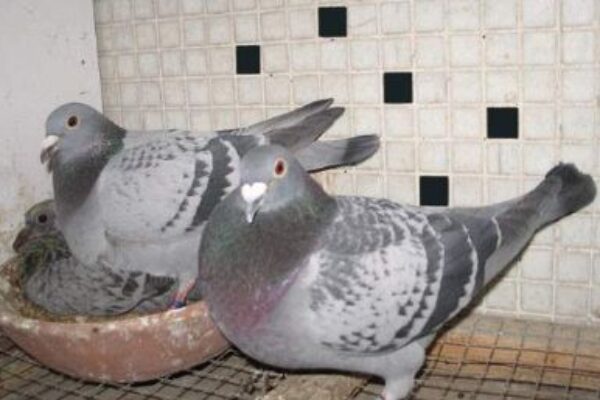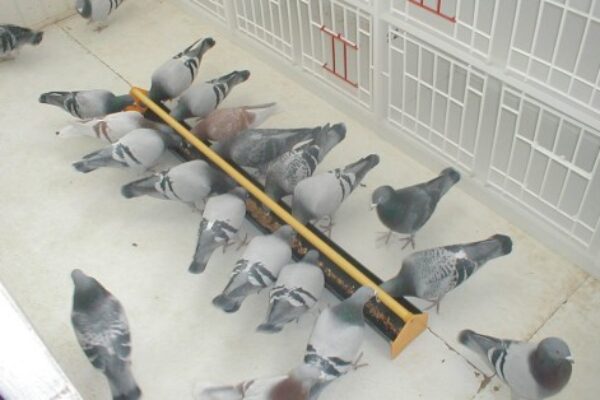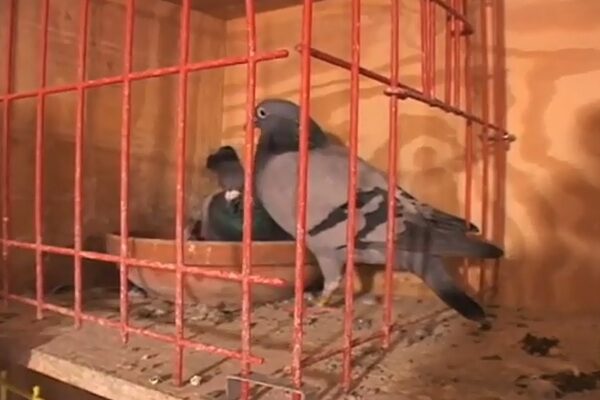 During this time of year in the sport, our attention turns to the old birds, especially to their health care and to their motivation for racing. In this article we are going to talk about a few things that you may want to think about during the month a May, including health considerations and racing systems.
During this time of year in the sport, our attention turns to the old birds, especially to their health care and to their motivation for racing. In this article we are going to talk about a few things that you may want to think about during the month a May, including health considerations and racing systems.
HEALTH CONSIDERATIONS
If you’re looking to raise healthy racing pigeons, there are several things, that you should consider.
Canker Treatments
These treatments should be applied to three to four hours after returning from a race with another follow up treatment the next day. Canker germs are a serious threat to the birds and can be picked up from contaminated waters on the race course. When tackled agressively before the problem erupts, it can be reasonably handled.
Supplements
To prepare your bird for the long journey, time-released supplements such as vitamin B, amino acids carnitine should be administered ahead of time, approximately 5-7 days before shipping, so that they are present in the muscles of the birds during pigeon racing. This added boost will help prevent stress in the birds. Carmine liquid (Versele-Laga) (carnitine) is a recommended additive as well as one Carni-Tab tablet (Colombine) and a Supra Pill (Colombine) to each pigeon on basketting night.
Canker Control at home
Using Turbosole to control canker in your own loft is also recommended for the health of your old bird. It can be safely used during racing, breeding and moulting periods. The serious fancier takes this important preventative step and any new racer should do the same.
Respiratory Infections
By using an eye loupe, you can check for slight respiratory infections. With this loupe, you will check the rim of the eye for bubbles of air in an excessively moist eye. If the eye is watery and has a number of air bubbles in the liquid around the rim of the eye, that pigeon most probably needs a seven-day treatment of respiratory product. The Australian Pigeon Company markets effective products called Doxyvet and Doxy-T for this very purpose. Additionally, you’ll want to remove the grit and mineral supplements when treating the birds with respiratory antibiotics.
Overall Health
To raise spectacular breeding pairs and babies, a wonderful product to use is Calcium/Vitamin D3 Syrup from the Australian Pigeon Company. This product works extremely well when paired with Pigeon Power. Together, they provide a great boost to the strength of both the parents and young. By mixing the calcium supplement with the Pigeon Power in water according to the directions, you can administer it to the breeders and their babies for optimal results.
PIGEON RACING STRATEGIES
Racing The Natural System
When racing the natural system with a hen and cock that are showing indications of pairing up, separate the two of them for several days before bringing them back together for 30-40 minutes prior to basketting. This trick will stop the hen’s cycle and thus put off the laying process. The forced separation will also increase the birds desire for each other. Allowing them to see one another for a little while before basketting will re-establish and reinforce the bond and their desire for home.
When using the natural system, try adding an egg to the nest of a pair of pigeons who have been sitting for several days, every other day until you’ve reached five or six eggs. Then on the night before basketing, take the cock and place him in a box or spare cage so that he cannot see his loft, his mate, or his nest. For example, if you basket on Friday night, take the cock away on Thursday night. The hen will not realize that the cock is gone until it is his time to sit the nest the next day. She will be very hesitant to leave the nest, or even to eat, because of the added eggs and because her mate is not available to take his turn, she will become even more attached to the nest than normal. You may have to physically take her from the nest and feed her in a separate box so that she will eat and drink. When taking the hen away, if time permits, let the cock into the loft. He will discover his nest unprotected and will hurry to take his turn on the eggs. Allow him settle on the nest for a few minutes and then take him away before allowing his mate back into the loft. Both birds will race extra hard to come home to protect those eggs when a question has been put into their minds regarding their responsibility for the nest.
On the natural system, when a pair starts to nest, remove one of the mates. This can be either the cock or the hen, but it is preferred to remove the hen. Let the cock take another mate, and then remove that mate. When shipping day arrives, let both hens in with the cock for twenty to thirty minutes, but don’t allow the hens to begin a heavy battle because they could lose form. Ship them all to the race. This trick can be used all season long to motivate either or all of the birds at different times.
Widowhood Racing
When racing the widowhood system, you may notice that the cocks appear to lose interest or the hens act as if they want to start mating with one another, switch the sexes. Allow the cocks to sit on the perches let the hens have the nest boxes. You will have to lock the hens in their box and feed them in the box, but this can certainly energize a widowhood team and produce excellent results.
Another widowhood system tip is to lock a strange cock into the box with a particular cock’s mate and then let him see the stranger in his box with his hen before I ship. Make sure that the race will be less than 300 miles and not longer than six hours on the wing for such a motivational tactic because sometimes this tactic can backfire on you. Some cocks get so hyped by any additional motivation that they wear themselves out in the race basket the night before and don’t have any energy left when it’s time to fly home.
On the widowhood system, remove the bowls completely from the nest box and always show the bowl to the cock before the cock is allowed to see the hen at the beginning of the season. Then as the longer races come up, put the bowl in the nest box with the cock and let him get in it and start to call. Then ship him. Once all the cocks are removed, allow the hens into the boxes with the nest bowls and let them have their way. You can even put a few old un-mated cocks into the loft to steam up the hens before you ship them. Remember this advice: “Ship the cocks cool and the hens hot.” This holds true for most races.
On the widowhood system, during a particularly bad race, if one of the birds comes home very late, lock that bird in its nest box (but not with its mate) for at least several hours or overnight would be even better. The race bird is worn out, and having to deal with an over-anxious mate will not do either of them any good. After a few hours of rest, put the pair together for just a few minutes, and then separate them again. This will tell your returned racer that, “Yes, your reward is here and waiting, when you are ready.” That pigeon’s sole motivation to race home may have been to see its mate. And after that performance, the reward is granted. But what that race bird needs most is rest. It’s a wise fancier who knows that this rest must be given.









wear will i get some berimax at can you let me no so i can get some please
Hi Jorge that is why if we keep using medication on our birds we are going to have bigger problems i think if we can natural products are the way to go to try and stop the problems before they start Brad.
Widowhood racing is so evil to me. Who ever thought of widowhood racing in the first place should’ve been shut up by sealing his or her mouth with duct tape and super glue. aaagh!!!
As of now I seldom use medication, unless its visible because I want bird with a strong immunity, vitamins I use it regularly and still looking for the best that suit my bird .